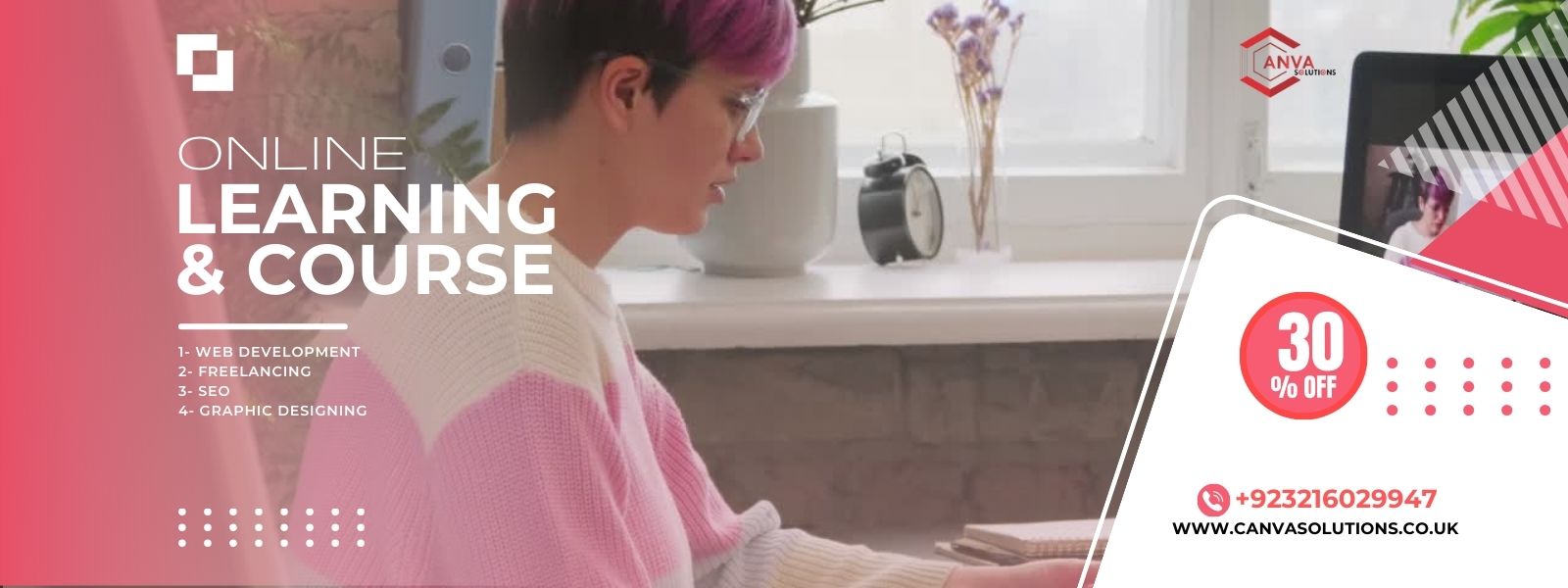WE ARE WHERE
YOU NEED US
At Canva Solutions, your dedicated course provider, we prioritize accessibility and unwavering commitment. Our resolute mission is to be consistently present wherever you require educational support. Our resources and expertise are meticulously tailored to ensure they are readily available, providing a steadfast commitment to meeting and exceeding your unique learning needs.

Short Courses Offered
| Sr. No | Short Course Name | Instructor's Name | Charges |
|---|---|---|---|
| 1 | Web Development | Mr. Hamza Hussain | Rs. 12000 |
| 2 | Freelancing | Ms. Neha Mustafa | Rs. 7500 |
| 3 | SEO | Ms. Laraib Iftikhar | Rs. 7500 |
| 4 | Web Design | Mr. Muhammad Ahmar | Rs. 12000 |
What’s it like learning with us?
Web Development
- Introduction of Laravel PHP Framework
- HTML Template to Laravel Blade TemplateMigrations
- Using Forms and Gathering Input
- Creating a registration & user login form
- Admin Panel Setup
- Using Controllers and Routes for URLs
- Eloquent ORM (Storing and Using Data)
- Creating and Using Composer Packages
- Using Ajax and jQuery
Freelancing
Introdution to Freelancing
- What is Freelancing.
- Why is Freelancing.
- Types of useful Freelancing market place.
- Types of skills required fpr Freelancing.
- Why upwork is most important Freelancing platform.
Your Profile Optimization
- How to create a perfect profile.
- How to write effective upwork profile description.
- Tips & Tricks for upwork profile.
- Tips for professional picture.
- Pricing.
- Upwork certification.
Upwork Profile Badge
- How to get upwork rising talent badges?
- What is (JSS) Job Success Score.
- How to get top rated Badge.
Proposal Writing
- How to decide which job is best
Upwork Project catalog
Payoneer Guide
Fiver gig / Other Freelancing Platform
SEO
- Seo and its importance
- How search engine discover, index and crawl content in search result pages?
Importance of keyword research
- identifying high-value terms relevant to your target audience
- Understanding user intent
- Niche research
On-page optimization
- Titles, meta descriptions, headings and relevant content.
Why content is important?
- Creating high quality and engaging content.
- Content optimization strategies.
Technical SEO
- Addressing technical aspects of website
- Site speed, mobile-friendliness, crawlability, indexation etc.
Local SEO
- Enhancing online presence for local searches.
- Optimizing Google My Business
Off-page SEO
- Link building- guestposting.
- How to acquire high-quality backlinks from authoritative websites?
- how to boost website's authority?
Monitoring and Analyzing
- Using tools like Google Analytics and Google Search Console.
- to track websites perfomance.
- Identifying areas of improvement.
Stay Updated of Seo trends
- Reviewing seo strategy.
- Make improvements.
- Audit Website.
Web Design
HTML
- Introduction to the fundamental structure of web pages.
- Learn tags, elements, and document structure.
CSS
- Explore the styling aspects of web development.
- Understand selectors, properties, and responsive design principles.
JavaScript
- Dive into dynamic and interactive web development.
- Learn about variables, functions, and event handling.
Tailwind CSS
- Master a utility-first CSS framework for modern designs.
- Explore its ease of use and customization capabilities.
Sass (Syntactically Awesome Stylesheets)
- Enhance your CSS with Sass preprocessor capabilities.
- Understand mixins, variables, and nesting.
React JS (Basics/Beginner)
- Introduction to the React library for building user interfaces.
- Cover the basics, including components, props, and state management.
Canva's Course Development Framework
Needs Analysis
Step 1
Description: Conduct a thorough needs analysis to identify the knowledge and skill gaps of the target audience. Understand the specific requirements and objectives that the course needs to address. This step involves gathering information about the learners, their backgrounds, and the desired learning outcomes.
Define Learning Objectives
Step 2
Description: Clearly define the learning objectives that the course aims to achieve. Learning objectives should be specific, measurable, achievable, relevant, and time-bound (SMART). They provide a roadmap for both course developers and learners, outlining what participants should know or be able to do upon completion
Content Development
Step 3
Description: Develop the course content based on the identified needs and learning objectives. Organize the material logically, ensuring a structured flow that facilitates comprehension. Use a variety of instructional methods, such as lectures, activities, and multimedia, to engage learners and cater to different learning styles.
Instructional Design
Step 4
Description: Apply instructional design principles to create a pedagogically effective learning experience. Consider factors like sequencing, scaffolding, and feedback mechanisms. Design assessments and evaluations to measure learner progress and understanding. Ensure that the course structure aligns with the overall learning objectives.
Implementation and Delivery
Step 5
Description: Execute the course plan by delivering the content to learners through the chosen instructional methods. This step involves organizing classes, creating online modules, or implementing any other chosen delivery mode. Provide support mechanisms for learners, such as discussion forums, office hours, or access to additional resources.
Evaluation and Revision
Step 6
Description: Continuously assess the effectiveness of the course through formative and summative evaluations. Gather feedback from learners and stakeholders. Analyze assessment results to identify areas of improvement. Use this feedback to revise the course content, instructional methods, or assessments for future iterations, ensuring ongoing relevance and effectiveness.
